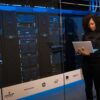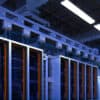Did you know that a huge percentage of the government’s electricity usage comes from data centers? In fact, as high as 10% of the federal government’s electricity use goes to data centers, according to estimates released by the Department of Energy. That is a staggering amount of energy being used for just managing your data.
Energy constitutes among the highest topline expense categories, when considering the functioning of a DCIM company. Therefore, better the energy efficiency, the higher the long-term competitive advantage. Considering the fact that data centers can waste up to 90% of electricity they pull of the grid, that competitive advantage can be massive.
According to statistics released by the Office of Energy Efficiency and Renewable Energy, data centers in the US consumed about 100 billion kilowatt-hours of energy in 2013, representing as much as 2% of the total electricity use across the country.
Data center energy use can be reduced by as much as 80%, provided the necessary procedures are implemented for efficient use of energy. Data center efficiency can be measured in the following categories:
- Power Infrastructure
- Cooling
- Airflow Management
- Information Technology
Let’s look at a few steps that help in creating an energy efficient data management system.
Power Distribution Units
Power Distribution Units, or PDUs, are devices that come fitted with a number of outlets and that use intelligence to enable organizations to map how energy is drawn. For granular cycling of devices, such as individual rack servers, PDUs control power at the outlet level. Intelligent PDUs track environmental factors and produce timely alerts. The detailed power and environmental information from PDUs can help data centers improve energy use and efficiency, say an article in TechTarget.
Uninterruptible Power Supply (UPS)
UPS systems helps in keeping data center equipment running during utility power failure. They also help in energy efficiency and intelligence. UPS systems can be used to run in parallel in order to support extended loads. If the battery count is matched to the load, energy wastage from having to charge additional batteries can be reduced.
Several bigger data management enterprises are considering standby or eco-mode for energy management purposes. Instead of converting AC to DC and back to AC, which is a double conversion, the UPS runs equipment from utility power and switches to UPS milliseconds after utility power failure.
DCIM Software
Data Center Infrastructure Management software provides extensive and detailed reports from the data center facility to servers and devices. Even though DCIM tools help IT professionals with system inventory control, lifecycle management and capacity planning, they can also keep equipment idling or power down equipment that are not required for the data center’s current loads.
Software tools can also relate data center temperature and humidity levels with system activity and energy use over time for informed capacity planning decisions. Experts at Sunbird say that DCIM not only enables an organization to understand what is drawing energy in the facility, but also identify ways to save energy usage, while maintaining a much safe environment for all IT equipment.
While choosing a DCIM tool, it is a matter of the software’s compatibility with data center equipment and features that meet an organization’s business goals.
Software organizations should also consider long-term strategy and goals for maximizing energy efficiency. For example, in larger data center facilities, several infrastructure improvements will boost energy efficiency by minimizing the number of voltage or current conversions between utility and IT systems. Moreover, the business goals of an organization will help management decide what kind of long-term strategy makes sense for the data center.
If all US data centers were just 20% more efficient, it would be possible to save more than 20 billion kilowatt-hours by 2020. That equates to about $2 billion in cost savings!
Marcelo Fincher is a blogger & writer on technology related topics with years of experience in studying technological advancements. In his spare time, Marcelo likes to read books and take a walk on the beach.

























































































































































































